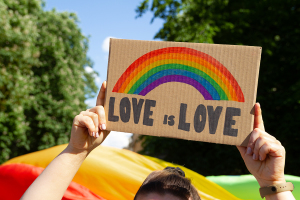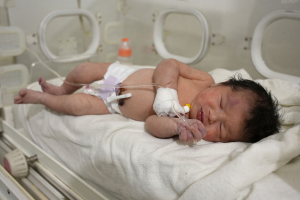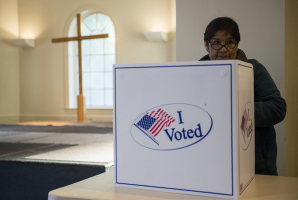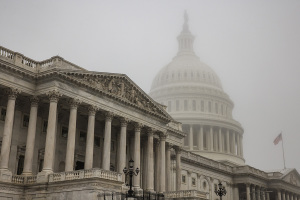The miracle of the 9/11 boat evacuation
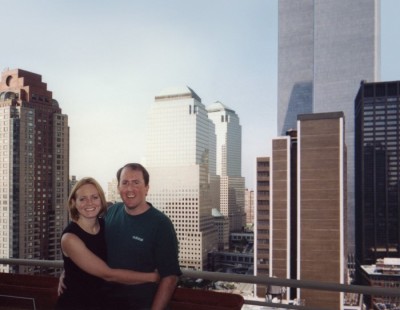
We stood at the edge of the Hudson River watching firefighting boats zoom past us. They were headed toward the stretch of coastline nearest to the fires that were raging at the destroyed World Trade Center complex. Although I was emotionally spent and too exhausted to speak, I marveled at the courage of those crews as they rushed toward the terror we had been trying so desperately to escape.
Just a few hours earlier, my husband Brian and I had been standing on our apartment terrace, monitoring the thick black smoke billowing from the North Tower of the World Trade Center, six blocks away, when a passenger jet swooped above our heads and flew straight into the South Tower. The impact lifted us off our feet and blew us back into our apartment, panicking us so much that we galloped down 24 flights of stairs with our 40-pound dog. It wasn’t until we hit the street that I realized I was barefoot and wearing my pink knee-length cotton nightgown.
But there was no turning back, and I soon realized no one was going to notice what I was wearing anyway. Hysterical men and women in every kind of attire were rushing directly into traffic, leaping over cement dividers, and dodging cars, ambulances and fire trucks. We ran south, joining thousands seeking the haven of Battery Park. But the crumbling towers had coated the park and everyone in it with waves of ash and dust and yellow gunk, sparking new waves of terror and desperation with every shift of the wind.
Hemmed in by smoke and destruction, as well as the bodies of water that stood as a barrier to an escape route, we felt cut off from the rest of New York City. We crouched on the bank of the Hudson, surrounded by thousands of other injured, traumatized people, who also felt trapped.
I gazed out into the river and recognized the outline of a tugboat moving closer and closer to the shore.
As the tugboat approached, the crew threw ropes over the pedestrian railing to secure it. After loading about 50 people, the tugboat backed up and left.
“It will be back,” Brian said reassuringly. “They saw how many people are standing here. Let’s get in line to catch the next one.” We joined a queue with others who were also desperately hoping to be rescued.
After a few minutes, we saw another, much bigger boat approaching. It was a NY Waterway, a ferry that travels between New York and New Jersey. And it was coming to get us!
As it pulled up alongside the railing, I became acutely aware this was not a loading zone. We were on a pedestrian walkway secured by a 4-foot-high safety railing, and the deck of the boat was about 7 feet below the top of the seawall, leaving a big gap between the top of the safety railing and the deck of the ferry. I was shocked the captain would even try to board here.
With no ladder or ramp to bridge the gap between the walkway and the deck, two muscular men began helping people over the rail and lowering them into the boat. It was awkward and slow — and definitely did not meet New York City’s stringent safety rules — but it was working.
Brian tossed Gabriel to the outstretched arms of a deckhand in the boat. Then, the guys who were helping to lower people took my forearms and eased me down. Brian climbed over the railing and jumped down onto the deck to join us.
As we made our way to seats on the open-air top deck, I took stock of the other evacuees. There were about 200 on board — office employees, hotel staff, students from Lower Manhattan schools, and mothers holding babies.
Some appeared unscathed, as if they had been nowhere near the chaos. Others were yellow from dust, like us. A few were red from blood. I tried not to stare at a blood-soaked man whose clothes had more gaping holes than intact material. Many people were crying, yet no one was talking.
We collapsed onto a bench, and Brian gathered Gaby onto his lap. It felt so good to sit down.
A wave of relief washed over me as we chugged away from the shore. After three hours of terror, we were off the island. We were alive.
As we sailed away from Manhattan, boats of all shapes and sizes were racing toward it from every direction. I had never seen so many boats sailing through the waterways at once.
When we stepped ashore in New Jersey, I looked back at my beloved city, shrouded now by a massive yellow, white and black cloud. We unloaded quickly, and without a backward glance, our captain and his crew turned the boat around and headed straight back into that massive cloud.
I later learned that Brian and I were two of the approximately 500,000 people rescued by boat that day from the island of Manhattan in a span of about nine hours.
According to a 2014 article in the U.S. Naval Institute News, the Sept. 11 boatlift became the largest sea evacuation in recorded history, surpassing even the “Miracle of Dunkirk,” the rescue of Allied soldiers from the coast of France during World War II.
Boat owners and operators who participated in the evacuation were answering a plea from the U.S. Coast Guard, which requested volunteers to move people out of Manhattan into safety. About 800 individuals manning 150 boats answered the call, many going back and forth across the harbor all day, dropping off passengers in New Jersey, Brooklyn, Staten Island and upper Manhattan.
Without those maritime heroes, that day would have played out much worse for hundreds of thousands of us.
“I believe God put me in that place and time to do His will,” said Peter Johansen, former COO of NY Waterways who was a key organizer of the boat evacuation. Peter, a Christian whose son is a pastor in Southeast Pennsylvania, adds, “When the Coast Guard sent out the message ‘Calling All Boats,’ the mariners did as they have always done, rescue those in danger. I wouldn’t want to live in a world where that didn’t happen.”
The selfless acts of those heroes and others who helped Brian and me in the 9/11 aftermath, including a church that provided financial assistance, helped lift us out of the depths of despair. We rededicated ourselves to the Lord shortly after the attacks and started on a faith journey that continues to this day.
On the 20th anniversary of 9/11, we mourn and remember the incredible loss of almost 3,000 lives. But on a day that saw the worst of humanity, we also saw some of the best. Those involved in the maritime rescue represented the best of humanity. And we will never forget them.
Christina Ray Stanton has been the short-term missions director for Redeemer Presbyterian Church in New York City for the past ten years. You can learn more about Christina’s 9/11 story at her website or in her book Out of the Shadow of 9/11: An Inspiring Tale of Escape and Transformation. Her new book, Faith in the Face of COVID-19: A Survivor’s Tale, will be available early October..
















